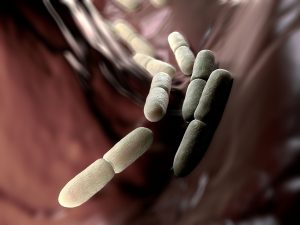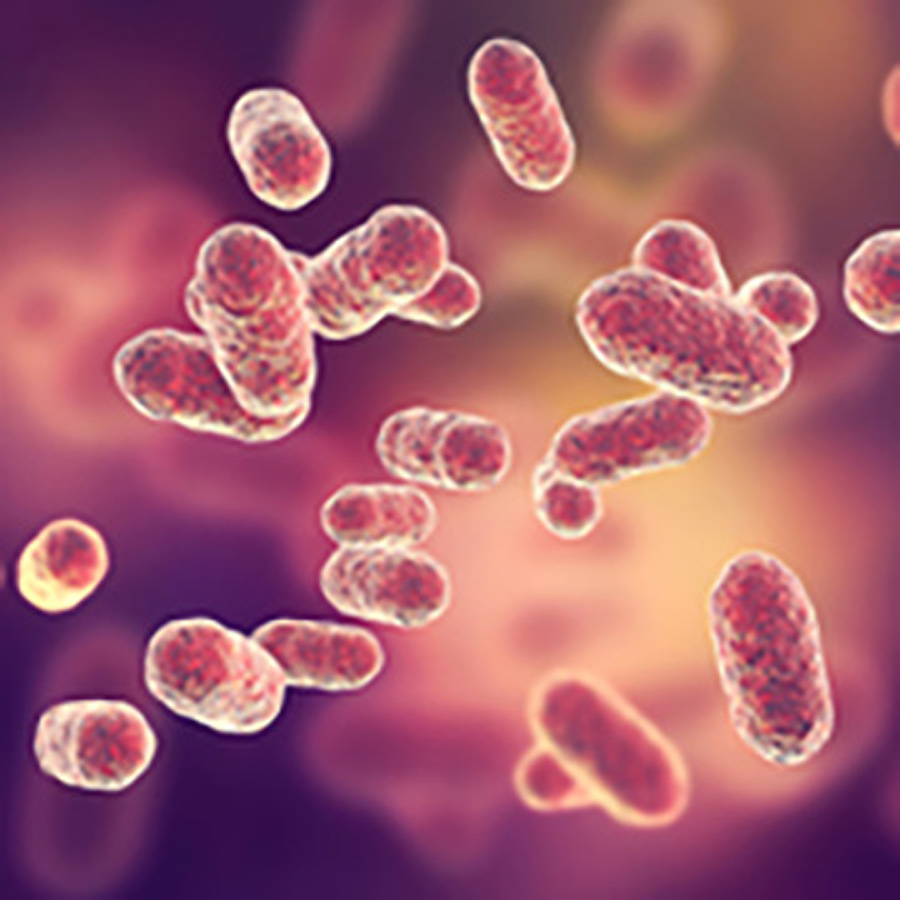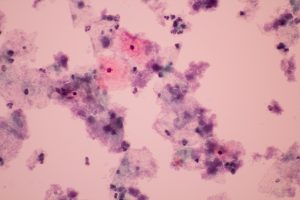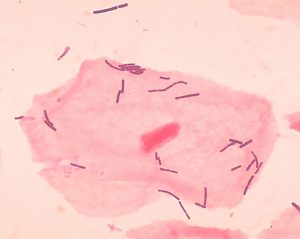Are bacteria that secrete protein degradation enzymes responsible for preterm births?
Preterm births occur before the 37th week of gestation and are the leading cause of infant deaths around the world. Although there are many factors contributing to preterm labour, including multiple gestation and diseases such as diabetes, approximately 40% of cases are associated with bacterial infection of the uterus. Dr Laura Sycuro and her team at the University of Calgary, Canada, have been investigating the properties of specific bacterial species that can affect the environment of the uterus and vagina and could be contributing to pregnancy complications and other women’s health problems.
The vaginal microbiome is the totality of microorganisms that colonise the vagina. The types and numbers of these bacteria can affect women’s health in a variety of complex ways. Although there has been a lot of research on the bacteria that can cause an imbalance of the microbiome (leading to diseases such as bacterial vaginosis, caused by superfluous growth of unhealthy bacteria), there are a number of species that colonise the vagina that are still to be studied.
The vaginas of healthy women of reproductive age are typically colonised by bacteria of the Lactobacillus genus, such as Lactobacillus crispatus. The lactic acid these bacteria produce protects the vaginal mucosa (the inner lining tissue) and reproductive organs, namely the cervix and uterus, from harmful bacteria. Vaginal Porphyromonas species are bacteria also often found in the vaginal environment of healthy women and have been recently shown to be associated with bacterial vaginosis, preterm birth, pelvic inflammatory disease and also cervical and uterine cancer.

Vaginal Porphyromonas species
Two of the most common vaginal Porphyromonas species are Porphyromonas asaccharolytica and Porphyromonas uenonis. These bacteria are present at low levels in the vaginas of approximately 15–50% of healthy women of reproductive age. The vaginal Porphyromonas bacteria belong to the same family as Porphyromonas gingivalis, a species that colonises the mouth and is responsible for gingivitis. By entering the bloodstream, this species can sometimes cause infections to distal organs such as the heart and the joints. Porphyromonas gingivalis has also been associated with infection of the placenta and amniotic fluid in some pregnant women who delivered premature babies.
The oral bacterium Porphyromonas gingivalis uses proteases to infect the placenta and amniotic fluid of women who deliver premature babies.
The ability of Porphyromonas gingivalis to destroy gingival tissue and contribute to diseases at other body sites is related to the ability of this microorganism to produce enzymes called proteases that can break down proteins in a process known as proteolysis. These proteins include collagen, a protein that is a main structural component of body tissues, and also proteins involved in the blood-clotting process. The vaginal species of this bacteria family have also been shown to break down proteins, although there was little known before about the enzymes they produce and their proteolytic targets.

Dr Laura Sycuro and her team at the University of Calgary have therefore taken a closer look into the properties of these species in order to better understand the possible mechanisms of infection in pregnancy, and the destruction of human tissues that can lead to complications including preterm birth.
Testing the enzymes
The team used a number of laboratory techniques in order to characterise the proteolytic properties of Porphyromonas asaccharolytica and Porphyromonas uenonis. The methods included adding fluorescently quenched collagens to the growth media. When protein break-down occurred (collagen proteolysis), the reaction would reverse the quenching effect and the result would look more fluorescent compared to the collagen samples that were not broken down. These assays confirmed that Porphyromonas asaccharolytica and Porphyromonas uenonis, by producing one or more proteases, are able to break down collagen in a dose-dependent way. A number of further degradation tests confirmed that both species produce enzymes that can break down different types of cervix and uterus collagens, among other proteins – a behaviour similar to the one observed in their oral relative Porphyromonas gingivalis.

The team also tested the ability of the bacteria under study to dissolve clotting factors by performing a number of clotting tests. It seemed that, besides producing enzymes that degrade structural components of the body’s tissues, the vaginal Porphyromonas species also produce enzymes that break down clotting factors, such as fibrinogen (a molecular complex that acts as an intermediate factor in the clotting process). During the experiments it was demonstrated that this property led to a delay in clot formation and thus to a disruption of the healing procedure and to bleeding.

Finally, the team also managed to identify the different types of proteolytic enzymes produced by the two vaginal species and pinpointed a particular metalloprotease, PepO, as responsible for remodelling the extracellular matrix. The extracellular matrix is the microscopic environment around the cells that provides them with structural and biochemical support; under normal circumstances, human metalloproteases participate in the natural process of degrading and remodelling the extracellular matrix, especially during pregnancy and labour. According to the team’s experiments, bacterial metalloproteases, on the other hand, could be responsible for unscheduled and unruly tissue break down, potentially leading to pregnancy complications like early cervical dilation or premature rupture of the amniotic membranes.
Finally, to rule out that the possibility that protein-degrading activity might also be observed in the common friendly bacteria of the vagina, the researchers ran a number of experiments on the properties of Lactobacillus crispatus and demonstrated that these microorganisms are not able to break down collagen or other cervical tissue proteins.
Sycuro’s team finds vaginal Porphyromonas species linked to preterm birth degrade structural proteins in reproductive tissues.
The role of bacteria in preterm births
There is evidence of other bacterial species that might be associated with pregnancy complications, one of which is Prevotella bivia. Prevotella bivia is a Gram-negative bacterium that has been isolated from women with premature rupture of membranes and was demonstrated to produce enzymes that break down structural proteins of these membranes, such as elastin and collagen. There have also been other bacteria isolated from tissues of women who experienced preterm birth, including Sneathia amnii. These species all produce proteolytic enzymes capable of degrading uterine and cervical tissues.

Sycuro’s work provides the first functional characterisation of the less-studied Porphyromonas species, demonstrating that their potent proteolytic properties depend on the numbers of bacteria present. These microorganisms can be found in healthy vaginas in concentrations of 103–106/mL and up to 109/mL in women with bacterial vaginosis. They also showed that the proteases these species secrete detach from the bacterial cell, allowing them to potentially diffuse to distal tissues. Consequently, it is suspected that vaginal Porphyromonas species, although not usually present in abundance, have the potential to cause pregnancy complications as a result of their ability to weaken tissues throughout the reproductive tract.

Degradation of extracellular matrix proteins found in the vagina and cervix (constituting the pelvic floor), as well as those in reproductive tissues such as the amniotic membranes and placenta, is a necessary component of the normal tissue remodelling required for the body to accommodate a growing foetus and deliver a baby at term. In addition, the ability of the body to properly regulate blood clotting is essential for processes like embryo implantation, expansion of the uterus, and a healthy delivery. Thus, as we come to understand the potential for bacteria to alter these processes through proteolysis, it suggests a new mechanism through which certain vaginal species can act as opportunistic pathogens. Research is also expanding to consider whether these newly defined vaginal pathogens contribute to a wider array of reproductive concerns, including fertility problems, miscarriage, and delivery complications such as infection, bleeding, and pelvic floor prolapse.
Failing to observe protein degradation activity from the most common friendly vaginal microorganism, Lactobacillus crispatus, supports the team’s hypothesis, but additional non-harmful bacteria need to be tested. Further studies of the vaginal microbiome will also be necessary to understand how immune responses are affected by the bacterial proteases and the role bacterial proteases may play in labour induction. The results of such studies will not only confirm the researchers’ hypothesis, but they could also open a window to new treatment opportunities, involving the development of medication that inhibits the activity of these enzymes in the female reproductive tract to prevent preterm birth.

Personal Response
Do you have any plans to further investigate how these bacteria influence the immune response or the complicated pathways that initiate preterm labour?
Yes, we just got new funding to continue this work and test the hypothesis that Porphyromonas proteases not only degrade pregnancy tissues directly, but also activate host metalloproteases that remodel pregnancy tissues and initiate labour. In this way, the deleterious effects of the bacterial proteases could be amplified. We will also test whether these bacteria degrade proteins that protect against infection, such as antibodies. Finally, we discovered that PepO is predicted to target a host protein that helps stimulate uterine contractions. We will examine these effects by exposing cultured cervical and uterine cells to Porphyromonas bacteria and their proteases.